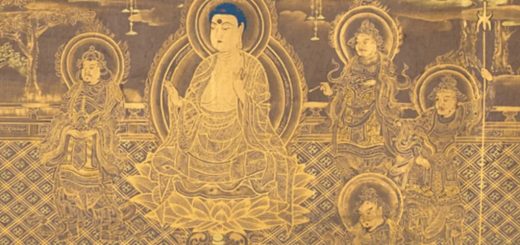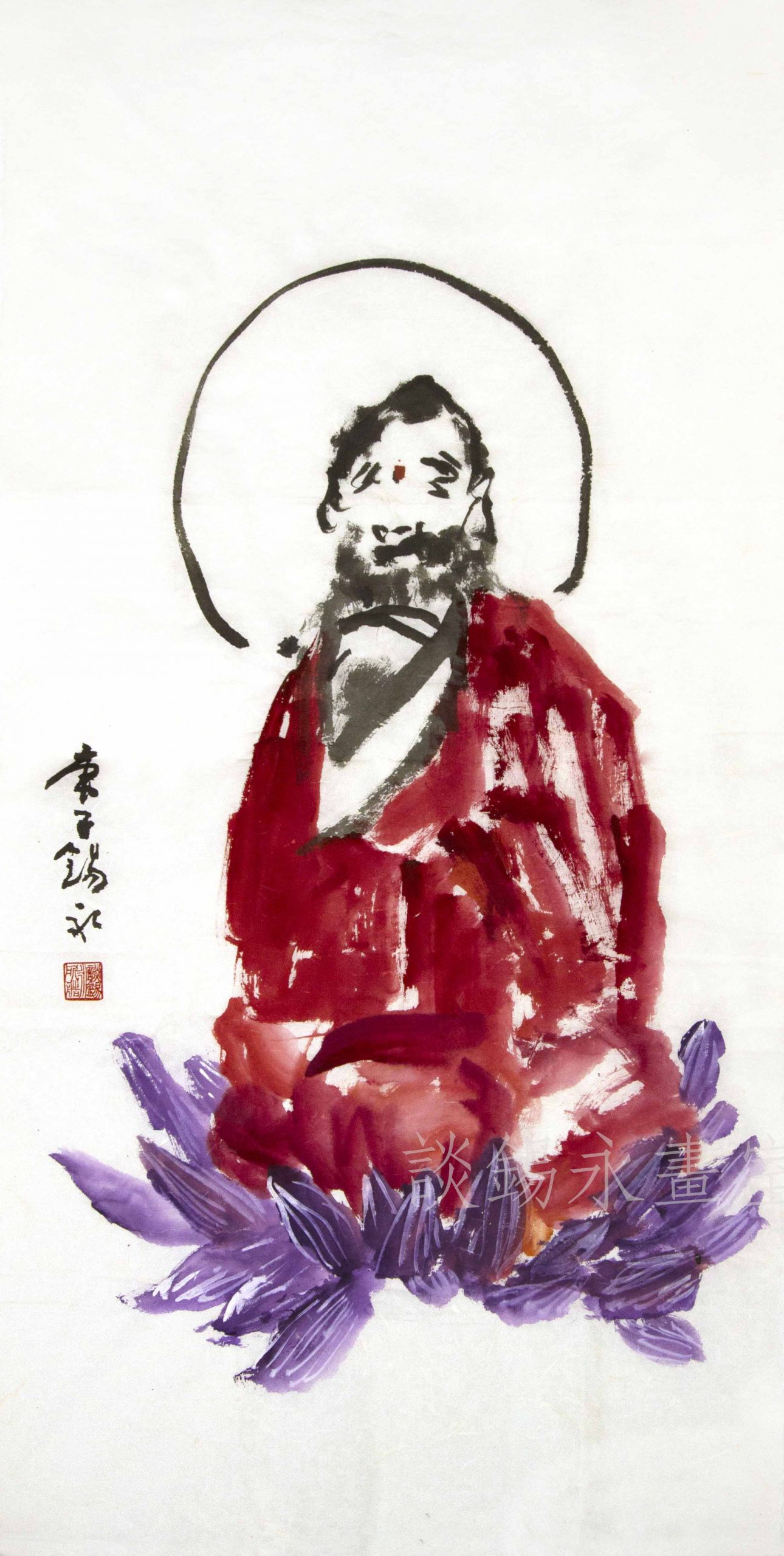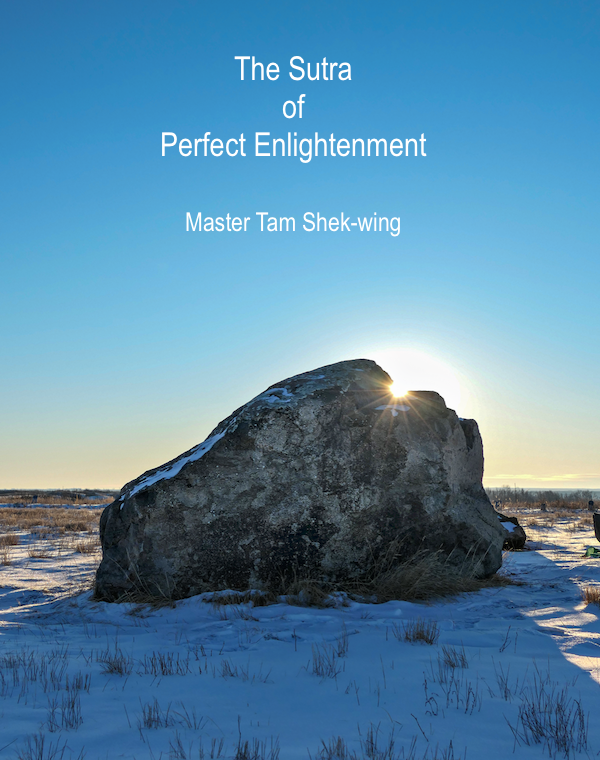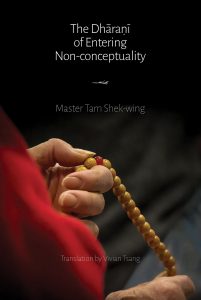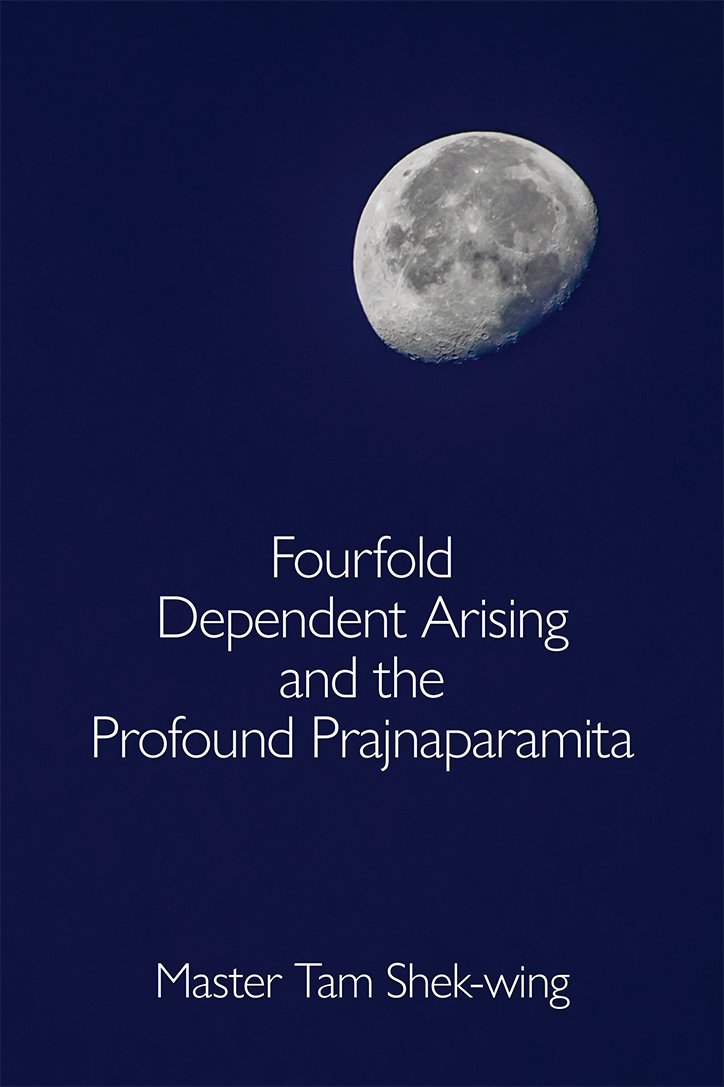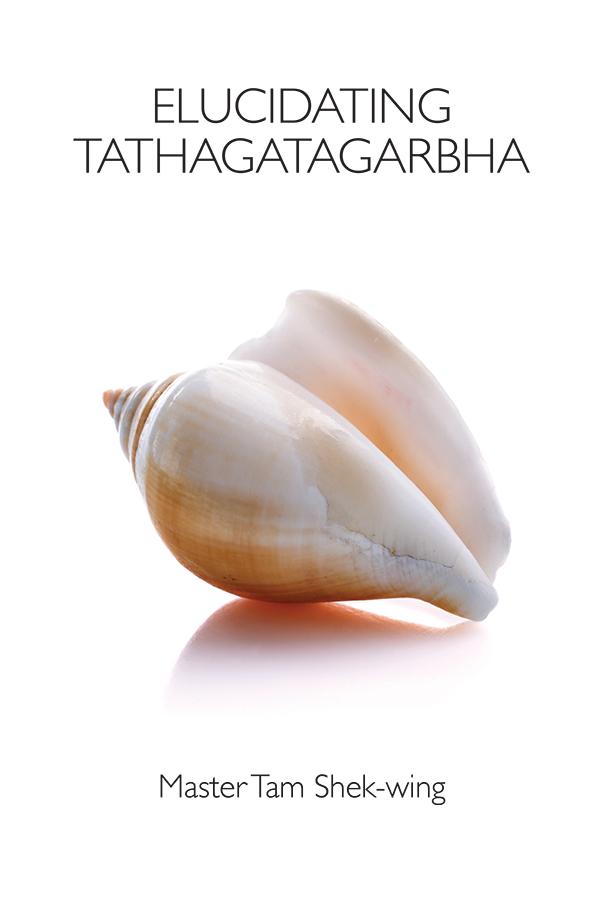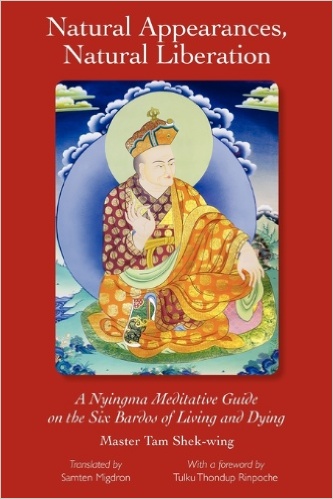Perfect Enlightenment 34: On Conducting Meditation Retreats
Show scripture (Chinese). 爾時,世尊告圓覺菩薩言:「善哉!善哉!善男子!汝等乃能問於如來如是方便,以大饒益施諸眾生。汝今諦聽!當為汝說。」時,圓覺菩薩奉教歡喜,及諸大眾默然而聽。 「善男子!一切眾生,若佛住世,若佛滅後、若法末時,有諸眾生具大乘性,信佛祕密大圓覺心,欲修行者,若在伽藍安處徒眾,有緣事故隨分思察,如我已說;若復無有他事因緣,即建道場當立期限,若立長期百二十日,中期百日,下期八十日,安置淨居。若佛現在,當正思惟;若佛滅後,施設形像,心存目想生正憶念,還同如來常住之日。懸諸幡花經三七日,稽首十方諸佛名字,求哀懺悔;遇善境界得心輕安。過三七日,一向攝念。 「若經夏首,三月安居,當為清淨菩薩止住,心離聲聞不假徒眾。至安居日即於佛前作如是言:『我比丘、比丘尼、優婆塞、優婆夷某甲,踞菩薩乘修寂滅行,同入清淨實相住持,以大圓覺為我伽藍,身心安居,平等性智,涅槃自性,無繫屬故。今我敬請不依聲聞,當與十方如來及大菩薩三月安居,為修菩薩無上妙覺大因緣故不繫徒眾。』善男子!此名菩薩示現安居,過三期日隨往無礙。善男子!若彼末世修行眾生求菩薩道入三期者,非彼所聞一切境界終不可取。 Show scripture (English). Then the World Honoured One, addressing the bodhisattva Perfect Enlightenment, said: “Excellent! Excellent! Good Son, you have questioned well to the Tathāgata about these kind of expedient means in order to confer great benefit on the sentient beings. Now listen well, and I shall explain for you.” The bodhisattva Perfect Enlightenment received this teaching with great joy. All those in the great assembly became silent and listened. “Good Sons, among all sentient beings, whether it is when the Buddha is alive, or after he has passed away, or even during the period of the degeneration of the dharma, there are a number who have the aptitude for Mahayana and who have faith in the Buddha’s mysterious mind of great Perfect Enlightenment, and who want to practice it. If they are living in the temple with many other followers, then they have numerous commitments and so they should just analyze according to the situation, as I have already taught.” “On the other hand, if they are not bound by commitments then they should erect a site of enlightenment and institute an intensive retreat. A long-term retreat should be one hundred and twenty days. A medium-length retreat should be one hundred days. A short one, eighty days, sitting quietly in a pure environment. If the Buddha is present, then you can directly correct your thoughts. If he has already passed away, then set up an image of him, and letting your mind abide in the mental picture of this image, you can bring about correct mindfulness, just the same as when he was here. After hanging up the banners and flowers, go through a period of three weeks, making obeisance to the names of all the Buddhas in the ten directions repenting and confessing all of your sins. Passing through three weeks with your thoughts focused, you will encounter excellent states of consciousness, and your mind will attain pliancy.” “If you pass through to the beginning of the retreat, then for three months you will abide in stillness, and carry out the pure quiet sitting of the bodhisattvas, with your mind free from the designs of the direct disciples and from involvements with other practitioners.” “When you come to the day of the retreat, in front of the Buddha, say this: ‘I, bhiksu/bhiksuni/upasaka/upasika so-and-so, would board the vehicle of the bodhisattvas, cultivate their practices of cessation-extinction and enter with them into their abiding in the pure marks of the real. I take great Perfect Enlightenment as my temple, with body and mind dwelling peacefully in the wisdom of the equality of the nature. Since the self-nature of nirvana is not restricted in any way, I now respectfully pray that I may not abide in the views of the direct disciples. And I will abide for three months of quiet retreat with the tathāgatas and great bodhisattvas of the ten directions. Since I will be cultivating the bodhisattva’s great causes and conditions of unsurpassed marvelous enlightenment, I will not be constrained by the limitations of the other practitioners.’” “Good sons, this is called the bodhisattvas exemplifying silent retreat. After passing through the three terms, you can practice anywhere without obstruction.” “Good sons, if, when these practicing sentient beings of the degenerate age who seek the Way of the bodhisattvas enter the three meditation terms, they experience meditational states which are different from those outlined in this sutra, they should not attach to them.” On conducting meditation retreats, Buddha’s answer was very concrete. He said, “Good Sons, among all sentient beings, whether it is when the Buddha is alive, or after he has passed away, or even during the period of the degeneration of the dharma, there are a number who have the aptitude for Mahayana and who have faith in the Buddha’s mysterious mind of great Perfect Enlightenment, and who want to practice it. If they are living in the temple with many other followers, then they have numerous commitments and so they should just analyze according to the situation, as I have already taught.” Answering the first question: On conducting meditation retreats. Temple is saṃgharāma (僧伽藍摩 or 伽藍 in the Chinese text). Living in the temple means it is complete with four matters: food and water, clothing, bedding, medicine. In the temple, one practices as Buddha instructed earlier. If one has other commitments and cannot live in the temple with others, one can “analyze according to the situation.” It means that besides living in the temple, there are other living arrangements possible for the practice. This is the expedient means for practitioners. There is a limit to the duration of a retreat. The longest is 120 days, the middle is 100 days, the shortest is 80 days. It means that there is limit to how long practitioners should gather for group practices. After Buddha had passed away, one can set up an image of him, abiding in the mental picture of this image, thinking of him, just the same as when he was here. One can also hang up banners and flowers, recite mantras and scriptures for 21 days (三七日). As well, one repents and confesses all sins, such that one’s mind has become at ease. Nowadays, meditations follow the Samantabhadra’s seven-aspect offering of paying homage, offering, confession, rejoice, praying for the perpetual turning of dharma-wheel, praying for Buddha’s abiding, and dedication to all beings. This way, one’s mind is at rest. The duration of 21 days, there is oneness of mind devoted to the practice. According to the Indian tradition, the summer retreat is three months long. During the retreat, one’s mind is free from the involvement of other practitioners (心離聲聞不假徒眾). Therefore group meditation is not a must. However, if one commits to a group retreat, practitioners of Śrāvaka may join. During a retreat, one makes the following vow in front of Buddha: I, bhiksu/bhiksuni/upasaka/upasika so-and-so, would board the vehicle of the bodhisattvas, cultivate their practices of cessation-extinction and enter with them into their abiding in the pure marks of the real. I take great Perfect Enlightenment as my temple, with body and mind dwelling peacefully in the wisdom of the equality of the nature. Since the self-nature of nirvana is not restricted in any way, I now respectfully pray that I may not abide in the views of the direct disciples. And I will abide for three months of quiet retreat with the tathāgatas and great bodhisattvas of the ten directions. Since I will be cultivating the bodhisattva’s great causes and conditions of unsurpassed marvelous enlightenment, I will not be constrained by the limitations of the other practitioners. This is the bodhisattva retreat. After the designated period, one can leave as one pleases. Whether one chooses to enter a retreat or not, if the experience is different from what one is taught, one should not become attached to them. This is a warning to the practitioners regarding the maras of the mind, or in other words, one should steer clear of the four maladies (all realms that deviate from the teaching). This concludes the answer on conducting meditation retreats. Show scripture (Chinese). 「善男子!若諸眾生修奢摩他,先取至靜不起思念,靜極便覺。如是初靜,從於一身至一世界,覺亦如是。善男子!若覺遍滿一世界者,一世界中有一眾生起一念者皆悉能知,百千世界亦復如是;非彼所聞一切境界終不可取。 「善男子!若諸眾生修三摩鉢提,先當憶想十方如來、十方世界一切菩薩,依種種門漸次修行勤苦三昧,廣發大願自熏成種;非彼所聞一切境界終不可取。 「善男子!若諸眾生修於禪那,先取數門,心中了知生住滅念,分齊頭數,如是周遍四威儀中,分別念數無不了知,漸次增進乃至得知百千世界一滴之雨,猶如目覩所受用物;非彼所聞一切境界終不可取。是名三觀初首方便。 「若諸眾生,遍修三種勤行精進,即名如來出現于世;若後末世鈍根眾生心欲求道,不得成就由昔業障,當勤懺悔常起希望,先斷憎、愛、嫉妬、諂曲,求勝上心,三種淨觀隨學一事,此觀不得復習彼觀,心不放捨漸次求證。」 Show scripture (English). “Good sons, those sentient beings who will practice śamatha must first grasp perfect quiescence, not arising any cogitation. Quiescence taken to its furthest limit results directly in enlightenment. If you can have this kind of initial quiescence, then proceeding from one body, enlightenment will extend like this throughout a whole world. Good Sons, when enlightenment fully pervades a whole world, if there is one sentient being within that world who arises a single thought, all, without exception will know it. The same is true in the case of a hundred thousand worlds. If it is not one of the meditational states about which you were previously instructed, you should not attach to it.” “Good sons, those sentient beings who want to practice samāpatti should first become mindful of all the tathāgatas of the ten directions and all the bodhisattvas of all the worlds in the ten directions. Depending on their various methods they should grow by degrees though practice, struggling against suffering towards samādhi, broadly manifesting the great vow to save sentient beings, the perfumation of which creates seeds. But if it is not one of the states about which you were previously instructed, you should not attach to it.” “Good sons, if these sentient beings want to practice dhyāna, they must first utilize the method of breath observance, and in the depths of their mind become fully aware of the arising, abiding and cessation of each thought. They must be clear in their discrimination of the breath count and practice it pervasively during each one of the four postures. There is no limit to how far this mindfulness of the discrimination of breaths can penetrate, as one can gradually advance to the point where he can be aware, within the domain of one hundred thousands worlds, of the falling of a single drop of rain, as if it were an object presented directly to him. But if it is really not one of the states of mind about which you were previously instructed, then afterwards you should not attach to it. These are called the introductory expedients of the three meditations.” “If sentient beings pervasively practice these three kinds of meditation, and keep working diligently to advance, they will be called tathāgatas appearing in the world.“ “If subsequent sentient beings of the degenerate age of dull faculties desire in their hearts to attain the Way, but somehow always fall short of their goal, it is because of karmic hindrances from the past. They must strive for penance and confession and continuously re-arise their hopes. They must first sever love and hatred, jealousy, envy, flattery and calumny and strive for the unsurpassed state of mind. Since the three types of meditation are all the investigation of the same single matter, if one meditation doesn’t work, try again with one of the others. Don’t let your mind dissipate, and gradually strive for actualization.” Answering the second question: On prioritizing the three meditations. Buddha answered the second question on how best to prioritize the three meditations. According to Buddha, any one of the three can be the initial practice. If the practitioner begins with śamatha, this is the initial quiescence. In the initial quiescence, the four elements disperse and the six objects become tranquil and extinct. This way there are no longer appearances of body and mind. From the quiescence of body, enlightenment is awaken. Proceeding from one body, quiescence extends to the entire world, everything is the realization of enlightenment. “When enlightenment fully pervades a whole world, if there is one sentient being within that world who arises a single thought, all, without exception will know it. The same is true in the case of a hundred thousand worlds.” If the practitioner begins with samāpatti, which is an illusory expedient practice. One visualizes all the tathāgatas of the ten directions and all the bodhisattvas of all the worlds in the ten directions. “Depending on the various methods they should grow by degrees though practice, persevere in spite of suffering towards samādhi.” In samādhi the illusory observation is cultivated to allow activities beneficial to sentient beings, which is the so-called transformation of various illusory appearances to the accomplishment of great compassion. If the practitioner begins with dhyāna, one becomes aware of the breath counts to allow for the resting mind. One then observes the arising, abiding, and cessation of each thought, to penetrate through the realms of arising, abiding, and cessation. This is the observation of cessation-extinction. Subsequently, there is no longer need to remain in the seated posture. Whether one is in the midst of activities, living, sitting, or lying down, the penetrated realm of knowing arises just the same. One gradually proceeds from discrimination of breaths can penetrate, to the point where one can be aware, within the domain of one hundred thousands worlds. Even of the falling of a single drop of rain, as if it were an object directly appear in front that can be of utilized. This is the way to prioritize the three meditations. Buddha also said, “If sentient beings pervasively practice these three kinds of meditation, and keep working diligently to advance, they will be called tathāgatas appearing in the world.” For sentient beings of dull faculties whose practice falls short of accomplishment, it is because of karma hindrances from the past. One must strive for penance and confession, and persistent in reviving one’s hope for realizing perfect enlightenment. One must also sever love and hate, jealousy, envy, flattery and calumny and strive for the path. One can choose any one of the three practices. If one doesn’t work, try again with one of the others. Don’t give up and strive for realization gradually. The above instructions align with the sayings in Candrapradīpasamādhi. This concludes the answers to Perfect Enlightenment. Show scripture (Chinese). 爾時,世尊欲重宣此義而說偈言: 圓覺汝當知, 一切諸眾生, The concluding verse for the section (English). Then the World Honoured One, wanting to restate the gist of this doctrine, spoke a verse. He said: Perfect Enlightenment, you should know A summary. The verse begins with the three retreats, then the three practices as the meditations in retreat. For dull faculties whose retreats do not lead to accomplishment, one should repent and confess their sins, then vow to follow the path to enlightenment. Most people nowadays have difficulties going on retreats, one then can follow the scripture, to not become attached to anything that one is not instructed. If one persists this way, whether in meditation or in everyday living, there is for sure a way leading towards perfect enlightenment.Chinese:
English:
Commentary:
Chinese:
English:
Commentary:
Chinese:
欲求無上道, 先當結三期,
懺悔無始業。 經於三七日,
然後正思惟, 非彼所聞境,
畢竟不可取。 奢摩他至靜,
三摩正憶持, 禪那明數門,
是名三淨觀。 若能勤修習,
是名佛出世。 鈍根未成者,
常當勤心懺, 無始一切罪,
諸障若銷滅, 佛境便現前。English:
That all sentient beings
Who want to seek the unsurpassed
Must, at the outset of the three retreats
Repent of, and admit their beginningless actions
For a period of three weeks;
Thereupon they will have correct thought.
But if they do not experience the states as they have been taught
They should not grasp them.
In śamatha, perfect quiescence;
In samapatti, correct mindfulness;
In dhyāna, clear observance of the breath.
These are called the three purifying meditations.
Those who diligently practice
Are called Buddhas appearing in the world.
Those of dull faculties who cannot bring this into effect
Must continuously strive at repentance
Of their beginningless crimes.
When all hindrances are extinguished
The Buddha-state appears before your eyes.Commentary:
